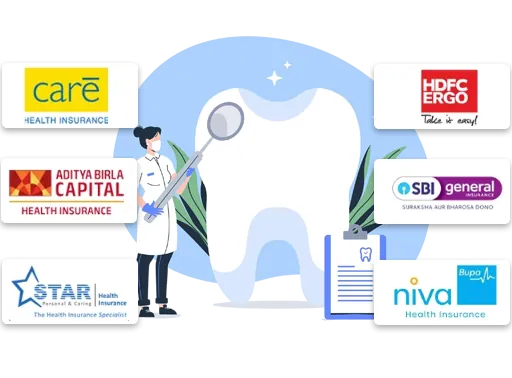National Rural Health Mission




Simran is an insurance expert with more than 4 years of experience in the industry. An expert with previous experience in BFSI, Ed-tech, and insurance, she proactively helps her readers stay on par with all the latest Insurance industry developments.
Reviewed By:

Sharan Gurve has spent over 9 years in the insurance and finance industries to gather end-to-end knowledge in health and term insurance. His in-house skill development programs and interactive workshops have worked wonders in our B2C domain.
Updated on Jul 03, 2025 5 min read
National Rural Health Mission (NRHM)
National Rural Health Mission is a government scheme that was first launched on April 12th, 2005 with the goal to reach out to the rural area of the country. A large ratio of the rural population continues to suffer and die from various diseases that are preventable to begin with. Problems that are faced include malnutrition, anaemia in children, childbirth and pregnancy related complications, HIV/AIDS, cancer, blindness, heart related diseases, etc.
The mission of NRHM is to provide accessible, affordable, high-quality healthcare available to the nation's vulnerable and rural populations. By eliminating the disparity, it makes public resources available to rural areas just as they are in the nation's urban and suburban areas. It also helps with the core causes of the problems, such as contaminated drinking water, poor hygiene and sanitation, gender difficulties, societal challenges, and more. Due to their inadequate infrastructure and poor health indices, 18 states receive a lot of focus from NRHM.
How Does It Work?
The National Rural Health Mission focuses on five main approaches in order to achieve the intended goal and purpose. The following are the five main approaches:
- Communitization
Community participation and ownership are emphasised by NRHM in making decisions about healthcare. Encouraging the formation of Village Health and Sanitation Committees (VHSCs) actively involves local communities in planning, implementing, and monitoring healthcare services. Tailoring healthcare services boosts their efficacy by meeting specific community needs. Communitisation strives to empower the communities, enhance awareness, and ensure that healthcare services respond to local needs. - Improved management through capacity building
Healthcare institutions and personnel's managerial and technical capacities are the focus of NRHM. It offers healthcare managers and administrators training and skill development programs. They can effectively plan, implement, and monitor healthcare initiatives. Better service delivery and resource utilisation is possible with improved management practices. - Flexible financing
In rural areas, NRHM encourages adaptable financing mechanisms to ensure availability of healthcare funds. States are encouraged to allocate sufficient budgets for healthcare and investigate creative financing models. Funding that is tied to performance, financing structured around outputs, and financing that is dependent on results are all part of this approach. All three motivate the achievement of healthcare objectives and outcomes. - Innovation in human resource management
NRHM intends to overcome the lack and disproportionate dissemination of healthcare experts in remote regions. It encourages creative methods in managing human resources, like sharing and shifting of tasks. Providing basic healthcare services at the grassroots level involves training and deploying community health workers, including Accredited Social Health Activists (ASHAs). Telemedicine and mobile health initiatives can also be deployed using its support. Specialised healthcare services are more accessible with its help to bridge the gap. - Monitoring progress against standards
NRHM prioritises monitoring and evaluating healthcare services against predefined standards and indicators for their importance. Performance benchmarks and quality standards are established for healthcare facilities and services. To identify gaps, track progress, and ensure quality healthcare service delivery, regular monitoring and evaluation is helpful. By using evidence to make decisions, course correction can be implemented as needed.
Need and Benefits of NRHM
- Increasing access to quality healthcare services in rural areas was a major objective of NRHM. Primary Health Centers (PHCs), Community Health Centers (CHCs), and Sub-Centers are among the newly established health facilities that have emerged from this development. This guarantees that medical services are provided nearer to the rural community.
- Through NRHM, the healthcare infrastructure in rural areas has been strengthened. Health centres now have adequate equipment, medical supplies and qualified healthcare professionals since the construction, renovation or upgrading process was simplified by the availability of this initiative.
- The NRHM has significantly contributed to addressing the problem of inadequate healthcare professionals in rural regions. Healthcare services' availability and quality are improved by supporting the recruitment and training of doctors, nurses, and paramedical staff.
- Reducing maternal and infant mortality rates has been the main objective of NRHM's focus on maternal and child health. Provision of prenatal/postnatal care, immunisation services, nutrition programs alongside promoting institutional deliveries has led to better health outcomes for both mothers and their children.
- NRHM has emphasised on improving health awareness and education in rural areas. They have begun campaigns for several health issues like sanitation, hygiene, family planning and preventing diseases. These campaigns have effectively improved health literacy and resulted in better implementation of healthy behaviours.
- NRHM has effectively contributed to preventing and controlling communicable diseases in rural areas. Support has been provided for programs that aim at increasing the number of people who receive vaccinations; introducing measures aimed at controlling vectors; ensuring availability of clean water & better hygiene practices; while carrying out extensive disease surveillance activities including those aimed at combating malaria, tuberculosis, HIV/AIDS etc. These diseases are less burdensome to rural populations thanks to these programs.
- The NRHM's approach to healthcare decision-making prioritises community participation and empowerment. The encouragement of the formation of Village Health and Sanitation Committees has resulted in involving local communities in planning and monitoring healthcare services. This method ensures that their demands are well-addressed.
Eligibility
The primary goal of NRHM is to provide better healthcare services by targeting rural regions and prioritising marginalised groups. Here are the generic eligibility needed to opt for rural health mission:
Geographical eligibility criterion for NRHM majorly targets rural areas and their respective communities, addressing the healthcare demands of individuals who live in the distant and rural areas of India is the main focus behind its programs and initiatives.
NRHM aims to assist disadvantaged populations like those with low economic status or belonging from marginalised communities by fulfilling their socioeconomic eligibility requirements. Increasing the accessibility of healthcare services for disadvantaged groups is our aim.
How To Register?
National Rural Health Mission(NRHM)'s application procedures cannot be determined as they differ. If the location where you live is covered by NRHM then benefits can be availed by you. Explore National Health Mission's (NHM) offerings and get informed by visiting their official website today. If you are seeking any sort of aid or support then contacting the toll-free helpline number at +91–800–800–1900 would be a good idea as you can get assistance regarding inquiries or registered grievance related issues by calling the helpline service. One approach to accessing NRHM is by registering yourself at the local healthcare facility which serves as a primary access point.
Conclusion
The aim of launching NRHM was to improve healthcare standards in Indian villages and to cater to underprivileged rural communities with top-notch yet affordable medical care is what NRHM aims for.The initiative lays strong emphasis on enhancing healthcare facilities with an aim to make it easier for people to avail themselves of medical services. Additionally, the campaign prioritises improving maternal-child health by promoting disease awareness among mothers.NRHM program eligibility is determined mainly by geographic and socio-economic considerations, and NHM provides different methods of registration such as visiting its official website, contacting their toll-free numbers, or going to nearby health care centres. Enabling rural communities to participate actively in decision-making and bridging the healthcare gap are some of the key accomplishments of NRHM.
Consult for Personalized Insurance Advice

But how does it work?
Schedule a call with India’s number 1 trusted advisor with a 4.5+ rating on Google. We are not your average insurance agents. Our advisors are experts in their insurance knowledge and will give you the right information at the right time. The service is free of cost! Don’t worry, we won’t spam as we value your time.
Health Insurer Network Hospitals
National Rural Health Mission: FAQs
1. What is the National Rural Health Mission (NRHM) Scheme?
In order to provide freely accessible and competitively cost healthcare services to rural parts of India, the government launched the National Rural Health Mission in 2005. It focuses on addressing a variety of health issues and improving the healthcare system in rural areas.
2. Who launched the NRHM scheme and which Ministry supervises the scheme?
Dr. Manmohan Singh, who was prime minister at the time, unveiled the NRHM plan on April 12th, 2005. The scheme is overseen by the Ministry of Health and Family Welfare.
3. What is the objective of the NRHM scheme?
The NRHM programme aims to provide low-cost, readily available high-quality healthcare to India& 039;s poor and rural populations. It aims to address the underlying causes of health problems in rural communities and end the disparity in healthcare resources between rural and urban areas.
4. National Health Mission Eligibility Scheme?
The primary aims of NRHM are marginalised communities and rural areas. The qualifying conditions also include people who live in rural areas and people who belong to marginalised populations and low-income groups. The goal is to increase these groups& 039; access to healthcare services.
5. How can one register for NRHM services?
NRHM registration procedures may differ based on the area and certain programmes. People can learn more about the NRHM offers by visiting the National Health Mission& 039;s (NHM) official website. For assistance with questions or grievance-related issues, they can also call the toll-free helpline at +91-800-800-1900. Registering at the neighbourhood healthcare institution that acts as a primary access point is another way to get access to NRHM services.
Health Insurance Companies
Know More About Health Insurance Companies
Share your Valuable Feedback
4.4
Rated by 2636 customers
Was the Information Helpful?
Select Your Rating
We would like to hear from you
Let us know about your experience or any feedback that might help us serve you better in future.


Written By: Simran Kaur Vij
Simran is an insurance expert with more than 4 years of experience in the industry. An expert with previous experience in BFSI, Ed-tech, and insurance, she proactively helps her readers stay on par with all the latest Insurance industry developments.





















Do you have any thoughts you’d like to share?